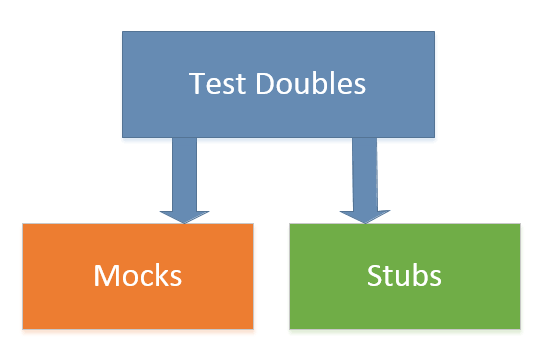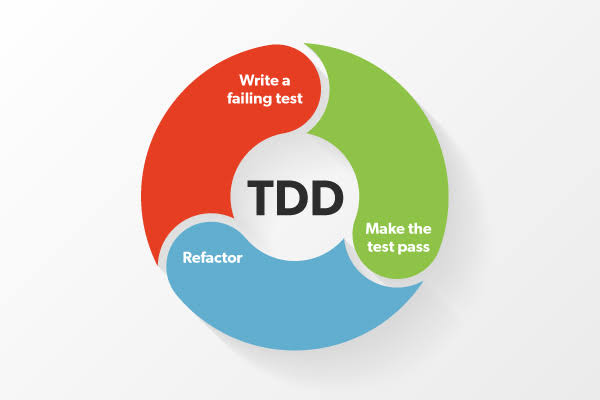In the ever-evolving world of software development, delivering high-quality code that stands the test of time is a non-negotiable requirement. One of the most powerful tools in a developer’s arsenal for achieving this goal is unit testing. This practice involves testing individual components, or units, of code in isolation to ensure their correctness. In this blog, we will talk about the importance of unit testing, its numerous benefits, and provide practical examples to help you implement unit testing effectively in your projects. Let us get started.
The Importance of Unit Testing

Unit testing serves as the foundation for creating robust and dependable software applications. By breaking down your code into manageable units, you can meticulously test each piece in isolation. This approach offers several key advantages:
Early Bug Detection: Unit tests help identify bugs at the earliest stages of development, making it easier and more cost-effective to fix issues.
Code Quality Enhancement: Writing unit tests encourages developers to think critically about various use cases, leading to cleaner and more maintainable code.
Confidence in Refactoring: With unit tests in place, you can confidently refactor or modify your code without the fear of introducing new bugs.
Documentation: Well-written unit tests serve as living documentation, describing how different components of your code should function.
Regression Prevention: Regularly running unit tests guards against regressions, ensuring that new code changes don’t inadvertently break existing functionality.
Setting Up the Testing Environment

To start with unit testing, you need to establish the right testing environment. This involves selecting a suitable testing framework based on your programming language.
For instance, if you’re working with Python, the built-in unittest framework or the third-party library pytest are excellent choices. Java developers often turn to JUnit.
Once you’ve chosen a framework, integrate it into your project and structure your codebase to include a dedicated folder for tests.
Let us dive into the practical side of unit testing by creating a simple Python function and writing a corresponding unit test.
Imagine you have a MathOperations module with a function that calculates the sum of two numbers.
python
# math_operations.py
def add(a, b):
return a + b
Now, let’s write a unit test for this function using the unittest framework
python
# test_math_operations.py
import unittest
from math_operations import add
class TestMathOperations(unittest.TestCase):
def test_add(self):
result = add(2, 3)
self.assertEqual(result, 5)
if __name__ == ‘__main__’:
unittest.main()
In this example, the TestMathOperations class inherits from unittest.TestCase and contains a test method named test_add.
Within this method, we call the add function with the arguments 2 and 3, and then use the assertEqual method to check if the result is equal to 5.
Testing Strategies and Best Practices
Writing effective unit tests involves adopting certain strategies and best practices.
Test One Thing at a Time: Each test should focus on verifying a single aspect of a component’s behavior. This keeps tests concise and easier to understand.
Use Descriptive Test Names: Choose descriptive names for your test methods that clearly indicate what is being tested.
Employ Assertions: Assertions are the backbone of unit tests. Use them to compare the expected output with the actual output.
Explore Edge Cases: Ensure your tests cover edge cases and boundary conditions to confirm your code behaves as expected in various scenarios.
Isolate Tests: Prevent test interference by ensuring that each test is independent and doesn’t rely on the state left by other tests.
Handling Dependencies with Mocking and Stubbing

When testing components that interact with external dependencies, such as databases or APIs, you often need to isolate those dependencies. This is where mocking and stubbing come into play.
Mocking
Mocking involves creating mock objects that simulate the behavior of dependencies without the overhead of actual implementation. For instance, when testing a database query, you can use a mock database connection to control the responses.
Stubbing
Stubbing is a subset of mocking, where you define specific behaviors for certain method calls. When testing code that sends network requests, you can stub the response to avoid actual network interactions.
Let’s consider an example where you’re testing a function that sends an HTTP request:
python
# my_module.py
import requests
def fetch_data(url):
response = requests.get(url)
return response.text
To test this function without making actual network requests, you can use a library like responses to stub the HTTP response:
python
# test_my_module.py
import unittest
import responses
from my_module import fetch_data
class TestMyModule(unittest.TestCase):
@responses.activate
def test_fetch_data(self):
url = ‘http://example.com/data’
responses.add(responses.GET, url, body=’Mocked response’)
result = fetch_data(url)
self.assertEqual(result, ‘Mocked response’)
if __name__ == ‘__main__’:
unittest.main()
In this example, the responses library is used to stub the HTTP response, allowing you to control the behavior of the external dependency during testing.
Code Coverage Analysis
While writing unit tests is essential, it is equally important to assess the coverage of your tests. It involves calculating how much of your code is exercised by the tests. Tools like coverage for Python can help you measure code coverage and identify areas that need more testing.
However, achieving 100% code coverage doesn’t guarantee bug-free code, but it does provide a strong indication of your tests’ thoroughness.
Test-Driven Development (TDD)

Test-Driven Development (TDD) is a software development methodology that emphasizes writing tests before writing the actual code. The TDD process typically involves three steps:
- Writing a failing test
- Writing the minimum code necessary to pass the test
- Refactoring the code for clarity and maintainability.
Let’s walk through an example of TDD using the Fibonacci sequence:
Write the Failing Test
python
# test_fibonacci.py
import unittest
from fibonacci import get_fibonacci
class TestFibonacci(unittest.TestCase):
def test_get_fibonacci(self):
result = get_fibonacci(5)
self.assertEqual(result, [0, 1, 1, 2, 3])
Write the Minimum Code to Pass
python
# fibonacci.py
def get_fibonacci(n):
fibonacci_sequence = [0, 1]
for i in range(2, n):
next_number = fibonacci_sequence[i – 1] + fibonacci_sequence[i – 2]
fibonacci_sequence.append(next_number)
return fibonacci_sequence
Refactor for Clarity and Maintainability
python
# fibonacci.py (refactored)
def get_fibonacci(n):
fibonacci_sequence = [0, 1]
while len(fibonacci_sequence) < n:
next_number = fibonacci_sequence[-1] + fibonacci_sequence[-2]
fibonacci_sequence.append(next_number)
return fibonacci_sequence
In this example, test driven developemnt guided the development process, resulting in code that is tested and maintains the expected behavior.
Continuous Improvement and Maintenance
Unit testing is an ongoing effort that requires regular maintenance. As your codebase evolves, update your tests to accommodate changes and new features. Remove or modify tests that are no longer relevant.
It is imperative for you to regularly review your tests to ensure they remain effective and relevant. A test suite that doesn’t evolve with your application can become a liability rather than an asset.
Conclusion
In the dynamic world of software development, unit testing stands as a pillar of excellence. By embracing unit testing, you create a safety net that catches bugs, facilitates refactoring, and boosts code quality. The benefits of unit testing extend beyond mere error detection; they empower you to build applications that are reliable, maintainable, and adaptable.
Unit testing is a journey, not a destination. As you continue to refine your testing strategies, explore advanced techniques, and contribute to the ever-growing knowledge base of software testing, you solidify your position as a proficient and quality-conscious developer.
So, whether you’re a seasoned developer or just starting on your coding journey, make unit testing an integral part of your development process. With every passing line of code and every successful test, you’re enhancing your skills and contributing to a software landscape built on the foundation of quality.






Add comment